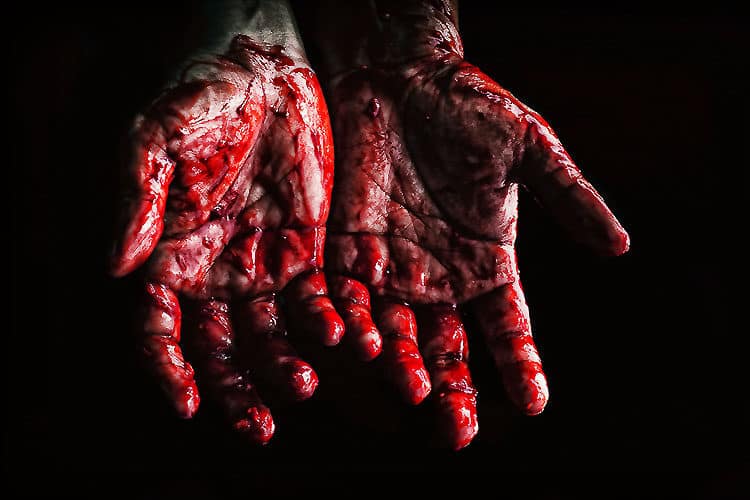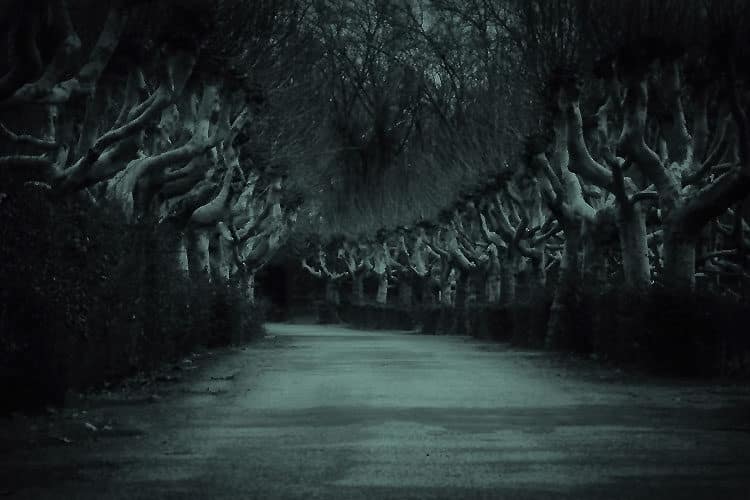Get started early in the year to be better prepared for the Halloween season
Welcome again to my blog, this one based on episode 40 of my A Scott in the Dark podcast. I recorded this podcast in mid-February 2020 while driving—with painful slowness—across the state of Florida to meet with clients. These preliminary meetings with clients have mostly been about—you guessed it—Halloween projects. It’s been a little bit different for me working as an outside consultant, because I have to get my year lined up so I know where I need to be when, what I need to get written, who I need to get trained, and all that sort of stuff.
Listen to the episode
After attending a few of these meetings, it dawned on me that there are probably a lot of haunted attractions having their preliminary meetings about Halloween—whether with an outside consultant or with their internal team. So, of course, that gave me the idea of doing a podcast on those preliminary meetings that many attractions have at the beginning of the year that start with, “Gosh, what do we need to get done between now and October?”
October is only eight months away, and by the way, Halloween events are starting earlier each year, at least here in Florida. That might mean some folks only have something like four months before they open. I’m joking—but maybe not. Of course, for those of you who are working year-round, this particular blog may not be applicable. This blog is focusing on those haunts that are seasonal.
February is the Time to Start
February is the time to start getting things all lined up. Back in my theme-park days, I’d try to have all of our top-line creative completed by February 28th. The logic behind that is knowing it would have to be approved by 15 different levels of people in five different departments. So, I wanted to have plenty of time—not just for the creation of the conceptual design and such but also for the approvals. If I was able to get everything done by the end of February, I knew there was a pretty good chance of having everything finally approved and signed off on by mid- to late March. Then we could start looking for our vendors to build stuff.

Begin with the Post-Mortem from Your Latest Event…and Take Notes at Every Meeting
In these early meetings, there’s a lot of information that needs to be covered. Hopefully, you’ve done your post-mortem or end-of-season review soon after your event closed to find out how the season went, what worked, what didn’t, etc. Now is the time to start taking those ideas and finalizing them. I strongly recommend assigning somebody to be the scribe in these meetings to take notes. There’s always somebody in every group who’s a phenomenal note taker and amazingly organized. They’re also usually the people who don’t want to talk much in these meetings. I know a number of you reading this are nodding and thinking, “Oh, I know who that is,” and probably a few of you are thinking, “That’s me. I like to be the one who sits there quietly, takes notes, and listens to all the creepiness being discussed.” Notes are critical, starting with the first meeting, because you’re going to want to go back and reference them later. You’re not setting anything in stone, but you want to know what was discussed and the outcome of these preplanning, these preseason meetings, these preconstruction meetings—these February meetings, let’s call them.
So, what are the things you need to discuss? Well, I’d suggest starting by reviewing the past season, even though you may have done that several months before. Look again at what worked and what didn’t—not just what you thought was cool but specific things, like, “the guests really reacted positively to the new ticketing system” or “everyone was talking about that scare in the third room” or “that new animation we put in there got people every single time, and it didn’t break down once” (which means it probably wasn’t an animation). Write all these down on a list. Recognize the successes honestly and be equally honest about what didn’t work.
Have All Levels of Team Members at These Meetings—and Maybe Even Guests
During these meetings, I strongly recommend not just having the owners or the creative directors or whoever the big bosses are sharing their opinions. Get opinions from the people who actually worked the haunt—the frontline folks, costumers, makeup artists, people selling beer. In some cases, the bosses and the frontline folks are the same people. I understand that, but make sure you get a broad spectrum of points of view. If it’s all just coming from the big bosses, they have a myopic view of how the experience went. They’re focused on dollars and cents, which is important, but it’s not the only thing to look at. You may even want to bring in a few of your regular guests—the ones who’ve attended your haunt every Halloween for the last 15 years—and ask them what worked and what didn’t.

“Start, Stop, Continue”
If you’ve been listening to my podcasts or reading this blog for a while, you’ve heard me use the simplistic model of “start, stop, continue.” After you’ve identified what worked and what didn’t, put either a “start,” a “stop,” or a “continue” next to everything on your list. Start doing things you’re not doing that you probably should be, stop doing things that didn’t work, and continue doing those things that did. This is why it’s important to recognize both the successes and the failures—you want to make sure you continue doing what’s actually working.
Create a Budget
So, now that you’ve evaluated how last year went and you’re looking forward to this year, the next obvious step is the budget. Now, I know there are some people out there who say they don’t do this to get rich, they do it out of love. Believe me, I agree with that, but I don’t think of budgets and finance in terms of making a fortune. I think of budgeting as a way to make the haunt sustainable. If you’re the owner, you want it to make as much money as possible. If you’re a frontline actor, you want the haunt to make enough money to be sustainable, so you get to do this again next year.
Definitely look at your budget before you go to any of the major trade shows, so you’ll know what you can afford to spend. You might look at your budget and say, “Hey, we really did well last year, so let’s invest $1,500 or $5,000 or $15,000 in something really cool and new this year, because we’ve earned it.” Or, you might say, “We put in a big animation or a big projection effect last year, so maybe this year we can pull back and coast a little bit. Maybe we don’t have to add a new element, but we can change out the content instead.” For example, with video, you can change out the content every single year if you want to. Granted, there’s a cost associated with doing this, but you can change the content without buying new hardware.

Labor
Another budget item to consider is labor. Here’s something that’s occurred to me—the difference between Halloween and Christmas is that the majority of money at Halloween is spent on people and the majority money at Christmas is spent on electronics, lighting, and displays. There’s a lot more capital investment at Christmas and a lot more invested in labor at Halloween.
Review your labor budget and ask yourself some questions: Did you need all of positions you had, or did you have not nearly enough positions? If you have to expand your labor, where will you find that money? Does it mean you’ll have to sell 50—or 50,000—more tickets a night or 200 more tickets throughout the season? If you don’t know the answer, who does?
On the flip side, can you find ways to be more efficient and reduce your labor so you can spend that money someplace else? Do you think it’s important to offer a returning performer a bonus or put performers who return year after year at a higher pay rate? If you can do it, this is a great way to keep your top people and encourage the newbies to stay in line while they’re learning the ropes.
If you’re a volunteer haunt, labor isn’t just dollars. It’s also bodies. Evaluate whether you need to recruit more volunteers, or maybe you can cut costs and have fewer volunteers but of higher quality.
Carefully consider elements you want to add or replace. You may discover that, when considering “start, stop, continue,” you want to add or replace a particular capital expense, make sure you put that in your budget, so you know beforehand what your profit and loss will be. You’ll know what your sustainability will be by November.
Marketing
Another item for the budget is marketing. More and more haunts are getting smart about marketing, and they’re recognizing that marketing costs money. The whole idea of, “If you build it, they will come” is great in theory, but people have to know you’re there and they have to know you’re different or cooler or unique in some way compared to your competition. Some haunts seek inexpensive locations to save money, but then they end up out in the middle of flipping nowhere. That could be fine, and I actually think it’s kinda cool. Sometimes getting to one of these out-of-the-way haunts can be as scary as the haunt itself—and that’s a good thing. However, you need marketing to let people know where you are and how to get there.
Make sure that you invest the right amount in marketing. Social media is a good avenue. Of course, most people think, “Social media is free.” That’s true, it’s free, or it can be free, but you still have to have somebody committed to making sure your social media accounts are regularly updated. So, you either have to invest in that person or invest in media buys or whatever is it to keep your social media going. If you budgeted for billboards last year, try to have a discount code posted on your billboards so you can track how many people saw or were impacted by the billboard. If that code was only used four times, maybe the money you spent on billboards could be better used on radio ads or something else. So, evaluate your marketing, and make sure you budget accordingly.

Operational Costs
Don’t forget operational costs—getting people into and through your haunt. Make it as easy as possible for guests to buy tickets. Allow them to purchase tickets online ahead of time, for example. There are tons of online ticketing sources, some of which are specifically targeted to haunts. Operational costs include the people who take the tickets, so make sure that’s budgeted—whether it’s minimum wage, $100 a night, a stipend, or whatever your form of monetary compensation. Figure this out now, so that if you work yourself into a financial corner, you can figure out how to get out of it.
Is Your Haunt Too Big or Not Big Enough?
Once you’ve addressed the budget, another thing you might want to discuss is size. Once all the 12-year-olds have finished snickering (and that includes me), consider whether you want to go bigger—or, maybe you’re too big. You may discover that the number-one complaint among your guests last year was that they had to wait too long for too short an experience. If that’s the case, how are you going to address that issue? Do you want to expand the footprint of your haunt? Can you afford to expand the footprint of your haunt? Or perhaps your haunt is really large, and you can’t expand it anymore. You might want to consider splitting the space into two different haunts with contrasting themes. This might also be a little bit of an underhanded way to raise your price.
Here’s an example. I’m going to do this in a way that will make the math simple. If you were charging $10 per person for a 6,000-square-foot haunt, you could charge $10 per person for two, 3,000-square-foot haunts—in essence, you’re doubling your price. Or you could charge $15 for guests to visit both haunts. You’re getting a $5 increase, and the guest’s perception is they’re getting a $5 discount.
In looking at the size issue, you may realize that by making your haunt smaller, you can make it more intense, because you can concentrate everything. You may find a 5,000-square-foot footprint is too much, and you can save money with a 3,000-square-foot location. The lease is less expensive, and you can take everything you had in the old haunt, put it into this haunt, and make it far more impactful.

Extending Your Run—or Not
I’m curious to hear if anybody was open after October 31 during this most recent Halloween season and had a stellar turnout. A couple of haunts that I worked on were open after Halloween night and, even though these were weekend nights, they just didn’t do nearly the business they should have done.
As I mentioned at the beginning, in Florida, the Halloween product is starting earlier and earlier—at the beginning of September in some cases or even the end of August. This is great, because it means there’s more demand for it, but I think this needs to be looked at, too. How about if you made your season shorter and tried to drive the same number of people into three weekends versus four? Or is it the case that you’re so packed that you need to expand and do six weekends instead of five? Again, this is the kind of discussion you want to have in regard to expansion or contraction of your experience.
Incorporating Changes Into Your Story—or Creating a New One
After you’ve gotten all the practical discussions out of the way at your early meeting, the next thing to talk about is story. Of course, I can’t get through a podcast episode without talking about the importance of story—and, by the way, my new book, Follow the Story, is available on Amazon and ScottSwenson.com/books.
You’re discovered all the practical things you need to do and all the changes you need to make, so now it’s time to find a way to make these either fit within the story you already have or create a completely new story that will encompass or incorporate the changes you want to make. There are a couple of ways to do this. One is to start from scratch every year. Another is to follow the approach that a number of theme parks use. Knott’s and Busch Gardens tend to maintain concepts for multiple years, but they continue to refine them and serialize them—in other words, they do the next chapter of that particular story. Some of the other parks, like Universal, try very hard to create 100% new product every year. This is great, but it’s also very expensive. Based on the answers to the questions we’ve talked about in this blog, decide on whether you’re going to use or expand on your current story or develop a new one.

Take an Aspect of Your Current Story and Expand It
To do the latter, one strategy is to take something that was just a teeny tiny part of your previous story and expand on it. Let me see if I can give you an example without disclosing a specific concept. Say, for example, you’ve got a demented doctor in your haunt who’s erected a shrine to his mother. His mom was sadistic as all get out—specifically toward animals. This year, instead of doing the whole doctor story, you do the mother’s story. This is a woman who used to hunt all kinds of critters, skin them, and cover her house with animal blood and pelts. Of course, PETA will be all over you, but this is just an example—not a good one, but an example.
So, you can do the next chapter of your story, a completely new story, or extrapolate on a tiny part of the story and expand it into its own haunt. But, whatever you do, don’t just throw in a bunch of new elements without making certain that they somehow fit into the story. If your haunt takes place in a medieval dungeon and a clown walks through—even if it’s a great clown and really scary—it’s still exceptionally stupid to put it into a medieval dungeon. Make sure you adapt your story in a way that makes sense. You can probably have the top line of the story completed before your meeting’s over.
Find New Dark Playmates
Now you’re working on your story, and you have a pretty good idea of what you’re going to change and what you’re going to keep doing, because guests loved it. Now it’s time to—what I call—look for new dark playmates; i.e., find new partners. These may be experts or outside contractors. For example, say one of the things you want to add is prosthetic makeup. Now’s the time to start seeking out people who do prosthetics. The earlier you get this done, the more likely you are to get a better price, because, when August, September, and October roll around, prosthetics people are in high demand. You can say, “We’d really love to add prosthetic horns to every one of our characters, but we want them custom made, and we want you to do them now, because it’s off season. Can you help us out, and can we get you for a better price?” By doing ths now, you run a much greater chance that they’ll be accommodating and willing to work within your budget. You can get some really good people for less than they’ll cost you if you wait until the summer to contact them.

Reach Out to Volunteer Organizations
Another great way to partner if you have a volunteer haunt is to start reaching out to other volunteer or service organizations—especially sororities, fraternities, and similar organizations. These folks are looking to have a good time, and they’re also willing to help you as volunteers. Pursue any opportunity to partner with them, and you’ll get some of your labor force for free.
Seek Out Sponsors
Other new dark playmates include sponsors. It might be a little bit early for some sponsors to be thinking about Halloween, but I doubt it, especially the larger sponsors. Now is a perfect time to start trying to find your partnership with your local Red Bull or alcohol distributor. Many people who run haunts think, “We can’t get sponsors, because we’re too small or we don’t know who to talk to.” Both of those concerns are valid. There are some haunts that are too small and don’t really have enough to offer the sponsor, so they’re not interested. But try to think of it as a partnership and how to create a win-win scenario. Some sponsors will help you no matter what size your haunt is or how many people attend. You can always find the right partner.
A sponsorship isn’t necessarily about money. You could have a sponsorship or partnership with a local pizza place that, if guests show up with their ticket on the nights your haunt is open, they get a free drink or 10% off a pizza or whatever. In turn, the restaurant gives your haunt a huge placement or supports a character appearance at their restaurant every Saturday night in September. They might actually be able to give you some money for that. Again, it just depends on who you’re working with, what the sponsor’s needs are, what the haunt’s needs are, and finding a way for both to benefit. If you start early enough, you can usually find someone to sponsor you or to partner with.
Then, after all that’s taken care of—and you’ve been sitting in the meeting for way, way too long—create a checklist and a timeline. You may think you can’t create a timeline because you like to work on your own schedule and blah, blah, blah. Okay, I get that. But having a timeline doesn’t mean you can’t alter it. What a timeline does is let you know whether you’re ahead of the curve—timewise—or behind it. Timelines don’t dictate how quickly or slowly you work. They provide a measurement for you to assess how you’re doing. So, create a timeline, and put everything on it. You want what I call the venue flow—the plan for your haunt, including changes—laid out by, say, March 2nd. You want your marketing poster design done by April 1st and your auditions scheduled by, say, June 15th.

Howl-O-Scream at Busch Gardens in Tampa is already dropping hints on social media to former cast members that their reunion auditions are coming up, and those cast members will get a letter soon. This is February, and they probably won’t hold those audition until the summer, but people are so excited and eager for every little tidbit of information, because they want to audition again this year.
So, put all that on your timeline. You can change it a million times, but it gives you a way of measuring whether you’re ahead of the curve or you gotta work harder or you have to change your plan. Again, October is only eight months away, so, the more you can plan and get to work on now before crunch time, the more cost effective you’ll be and the more easily you’ll be able to adapt to those unexpected changes that are bound to crop up as you get closer to your opening date.
If you’d like to comment on this blog or make suggestions, please do. Check out our Facebook group, go to AScottInTheDark.com or my website, or email me at [email protected].
